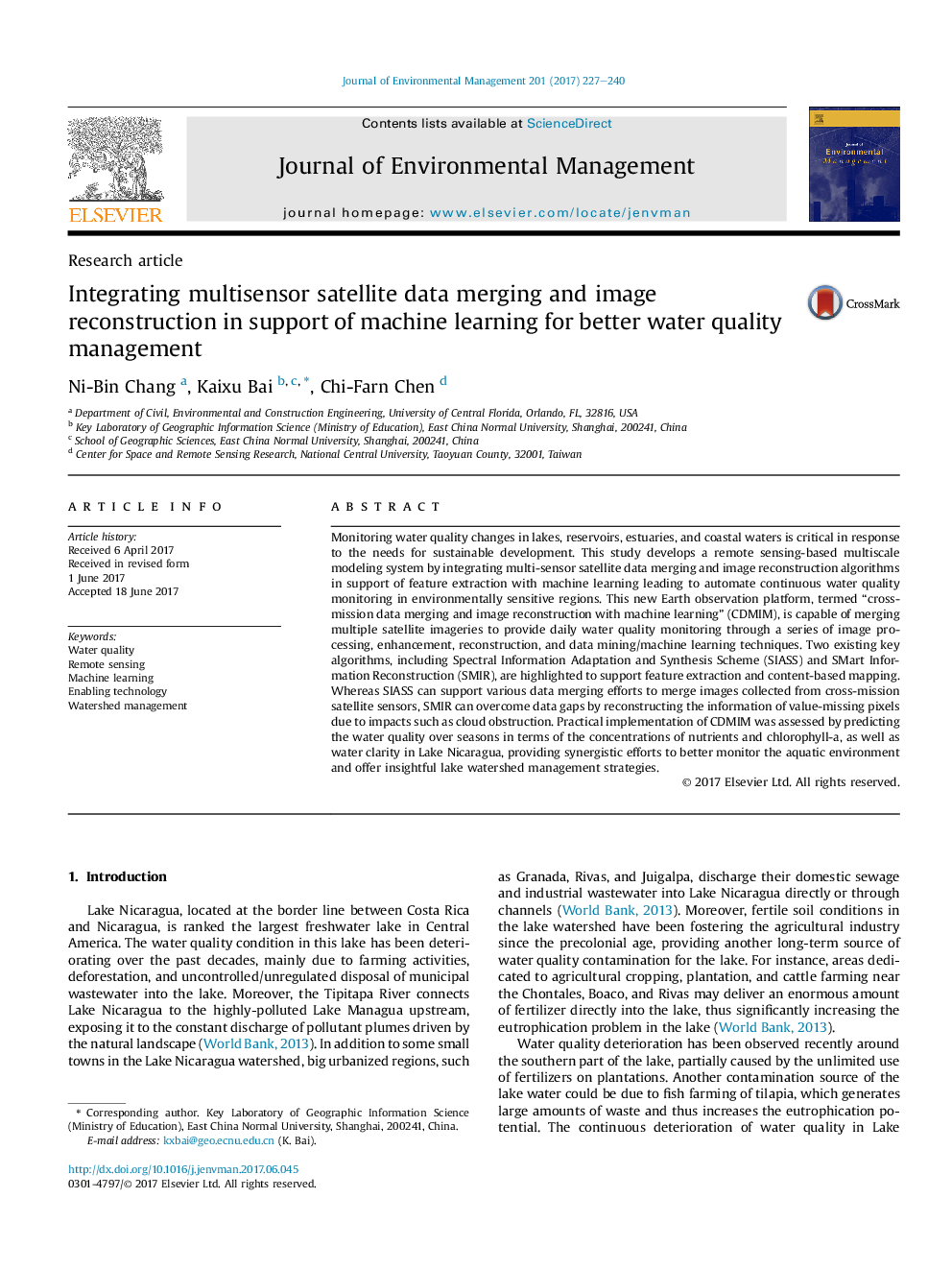ترجمه فارسی عنوان مقاله
ادغام داده های ماهواره ای چندرسانه ای و ادغام تصویر برای حمایت از یادگیری ماشین برای مدیریت کیفیت بهتر آب
عنوان انگلیسی
Integrating multisensor satellite data merging and image reconstruction in support of machine learning for better water quality management
| کد مقاله | سال انتشار | تعداد صفحات مقاله انگلیسی |
|---|---|---|
| 88468 | 2017 | 14 صفحه PDF |
منبع

Publisher : Elsevier - Science Direct (الزویر - ساینس دایرکت)
Journal : Journal of Environmental Management, Volume 201, 1 October 2017, Pages 227-240
ترجمه کلمات کلیدی
کیفیت آب، سنجش از دور، فراگیری ماشین، فعال کردن فناوری، مدیریت آبخیزداری،
کلمات کلیدی انگلیسی
Water quality; Remote sensing; Machine learning; Enabling technology; Watershed management;

